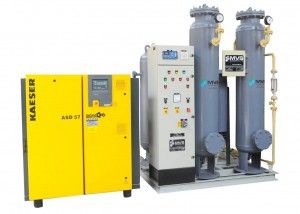Technical facts about color masterbatches
Since their
introduction in the 1960s the color masterbatches
has steadily penetrated the traditional colored compound market. It is a solid
concentrate of color and/or performance enhancing additives such as
anti-static, UV stabiliser, metal deactivator, etc., that is added to a base
polymer to impart these attributes. It is usually supplied in granular form,
either as pellets similar in size to most polymers or as miniature pellets,
known as micro granules. Alternatively, they can be delivered in 'rough cut'
form - a mixture of small shreds and chunks.
Two main
types are offered - polymer specific and universal. Polymer specific
masterbatch is produced using the same base polymer group. Universal they employs
a carrier system that is capable of carrying the high quantities of additives
necessary to deliver the end use properties required as well as affording the
essential compatibility required across a broad range of polymers.
Universal ones
are normally readily available from stock, in small quantities and are cost
effective if used correctly. However, in terms of compatibility, they are a
compromise and processing difficulties can arise with some materials and
engineering polymers that may have to be pre-dried. They are not recommended
for use at high dosage levels as the appearance or physical properties of the
final product may be adversely affected.
Conversely,
polymer specific masterbatch, which can be pre-dried with the host polymer, may
be added at high loading without compatibility problems. However, only a
limited range of colors is generally available and not all engineering polymers
lend themselves to conversion to them offered by the masterbatch producers.
Their
formulations normally include:
·
Pigment
- up to 65 per cent
·
Polymer
carrier - 35 to 50 per cent
·
Dispersing
aids (waxes/stearates etc) - up to 10 per cent
·
Inorganic
filler


Comments
Post a Comment